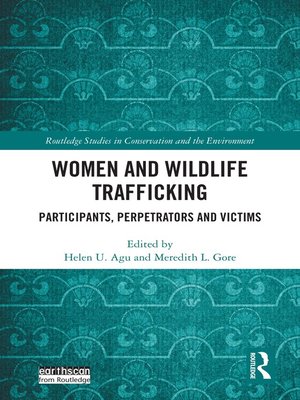Women and Wildlife Trafficking
ebook ∣ Participants, Perpetrators and Victims · Routledge Studies in Conservation and the Environment
By Helen U. Agu

Sign up to save your library
With an OverDrive account, you can save your favorite libraries for at-a-glance information about availability. Find out more about OverDrive accounts.
Find this title in Libby, the library reading app by OverDrive.



Search for a digital library with this title
Title found at these libraries:
| Library Name | Distance |
|---|---|
| Loading... |
This volume examines women and wildlife trafficking via a collection of narratives, case studies and theoretical syntheses from diverse voices and disciplines. Wildlife trafficking has been documented in over 120 countries around the world. While species extinction and animal abuse are major problems, wildlife trafficking is also associated with corruption, national insecurity, spread of zoonotic disease, undercutting sustainable development investments and erosion of cultural resources, among others. The role of women in wildlife trafficking has remained woefully under-addressed, with scientists and policymakers failing to consider the important causes and consequences of the gendered dimensions of wildlife trafficking. Although the roles of women in wildlife trafficking are mostly unknown, they are not unknowable. This volume helps fill a lacuna by examining the roles and experiences of women with case studies drawn from across the world, including Mexico, Cameroon, the Central African Republic, South Africa and Norway. Women can be wildlife trafficking preventors, perpetrators, and pawns; their roles in facilitating wildlife trafficking are considered from both a supply and a demand viewpoint. The first half of the book assesses the range of science, offering four different perspectives on how women and wildlife trafficking can be studied or evaluated. The second half of the book profiles diverse case studies from around the world, offering context-specific insight about on-the-ground activities associated with women and wildlife trafficking.
This book will be of great interest to students and scholars of wildlife crime, environmental law, human geography, conservation, gender studies and green criminology. It will also be of interest to NGOs and policymakers working to improve efficacy of efforts targeting wildlife crime, the illegal wildlife trade and conservation more broadly.







